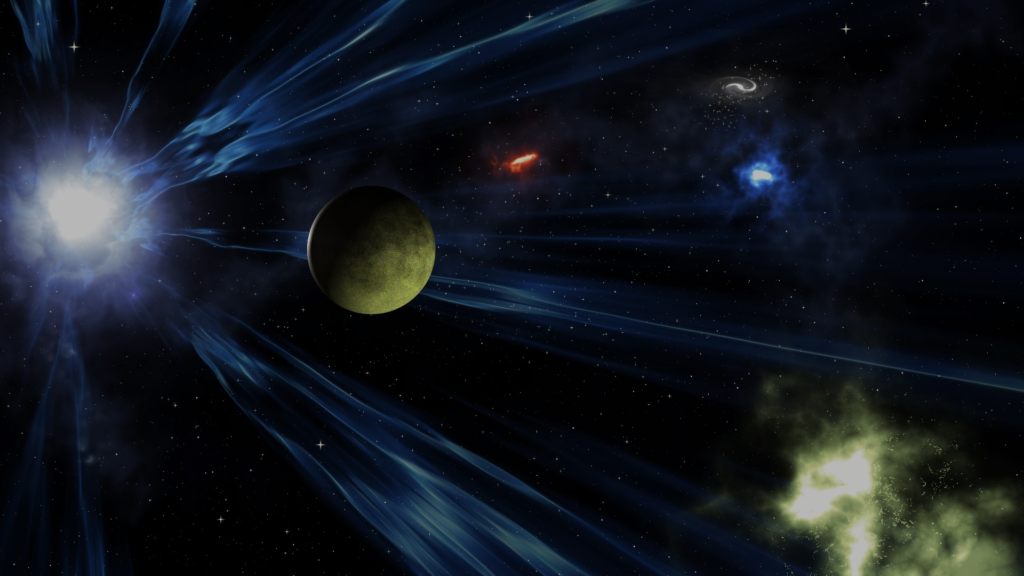## A Journey Through the Milky Way Galaxy: Its Structure and Wonders
Have you ever looked up at the night sky and felt a sense of awe, wondering about the vastness of space and the countless stars scattered across the inky blackness? That breathtaking sight is just a tiny glimpse of our home galaxy, the Milky Way – a swirling spiral of hundreds of billions of stars, gas, dust, and dark matter. Let’s embark on a cosmic journey to explore its captivating structure and uncover some of its amazing wonders!
### 1. The Milky Way’s Spiral Structure: A Cosmic Pinwheel
Imagine a giant, spinning pinwheel – that’s a simplified picture of our galaxy. The Milky Way is a barred spiral galaxy, meaning its central region is elongated like a bar, with spiral arms extending outwards from it. These arms aren’t rigid structures but rather density waves – regions where stars are more tightly packed. Think of them as traffic jams in the cosmic highway. Our solar system resides on one of these arms, the Orion Arm, located about halfway between the galactic center and the outer edge.
Interestingly, we can’t see the Milky Way’s spiral structure from our vantage point within it. It’s like trying to map a city while standing in the middle of a busy street! Our understanding of its spiral shape comes from observations of other spiral galaxies and sophisticated mapping techniques using radio waves and infrared light, which can penetrate the dust clouds that obscure our view of the galactic center.
### 2. The Galactic Center: A Supermassive Black Hole
At the heart of the Milky Way lies Sagittarius A*, a supermassive black hole with a mass four million times that of our sun. This behemoth exerts a powerful gravitational pull on everything around it, controlling the rotation of the entire galaxy. While we can’t see the black hole itself (as it doesn’t emit light), we can observe its effects on nearby stars, which orbit it at incredible speeds.
Imagine a cosmic drain, relentlessly pulling in matter. While Sagittarius A* is swallowing matter, it’s not a cosmic vacuum cleaner that sucks everything in instantly. The process is gradual and complex, involving intense gravitational forces and interactions with surrounding gas and dust.
### 3. The Milky Way’s Inhabitants: Stars, Nebulae, and More
Our galaxy is teeming with life (though not necessarily *biological* life, at least as far as we know). Hundreds of billions of stars, of varying sizes, ages, and compositions, call the Milky Way home. These stars are not uniformly distributed but clustered in groups, forming open and globular clusters. Between the stars lie vast clouds of gas and dust – nebulae – where new stars are born. These nebulae are truly spectacular, often showcasing vibrant colors and intricate shapes, captured beautifully in images from telescopes like Hubble and James Webb.
The Orion Nebula, for example, is a stellar nursery located relatively close to us, making it a prime target for astronomers studying star formation. It’s a breathtaking sight, showcasing the birth of new stars within glowing clouds of gas and dust.
### 4. Dark Matter’s Role: The Invisible Hand
While we can see the stars, gas, and dust, a significant portion of the Milky Way’s mass is composed of dark matter – a mysterious substance we can’t directly observe. Its presence is inferred from its gravitational effects on visible matter. Dark matter acts like an invisible scaffolding, holding the galaxy together and influencing its overall structure. Scientists are still trying to understand what dark matter actually is, making it one of the most intriguing mysteries in astronomy. Think of it as the unseen glue that keeps our galactic pinwheel from falling apart.
### 5. Our Place in the Milky Way: A Cosmic Perspective
Understanding the Milky Way gives us a profound perspective on our place in the universe. We are but a tiny speck within this vast cosmic structure, orbiting an unremarkable star on an unremarkable arm. Yet, this realization is awe-inspiring. It compels us to explore, to learn, and to continue pushing the boundaries of our knowledge, seeking answers to the deepest questions about our universe.
**In conclusion,** the Milky Way is a breathtaking celestial structure, full of fascinating wonders waiting to be discovered. From its spiral arms and supermassive black hole to its stellar nurseries and mysterious dark matter, our galaxy offers a constant source of wonder and inspiration. So, grab your telescope (or even just your eyes on a clear night!), look up, and marvel at the beauty and complexity of our galactic home. Share your thoughts and any further questions in the comments below! And don’t forget to explore further – the universe is waiting!


